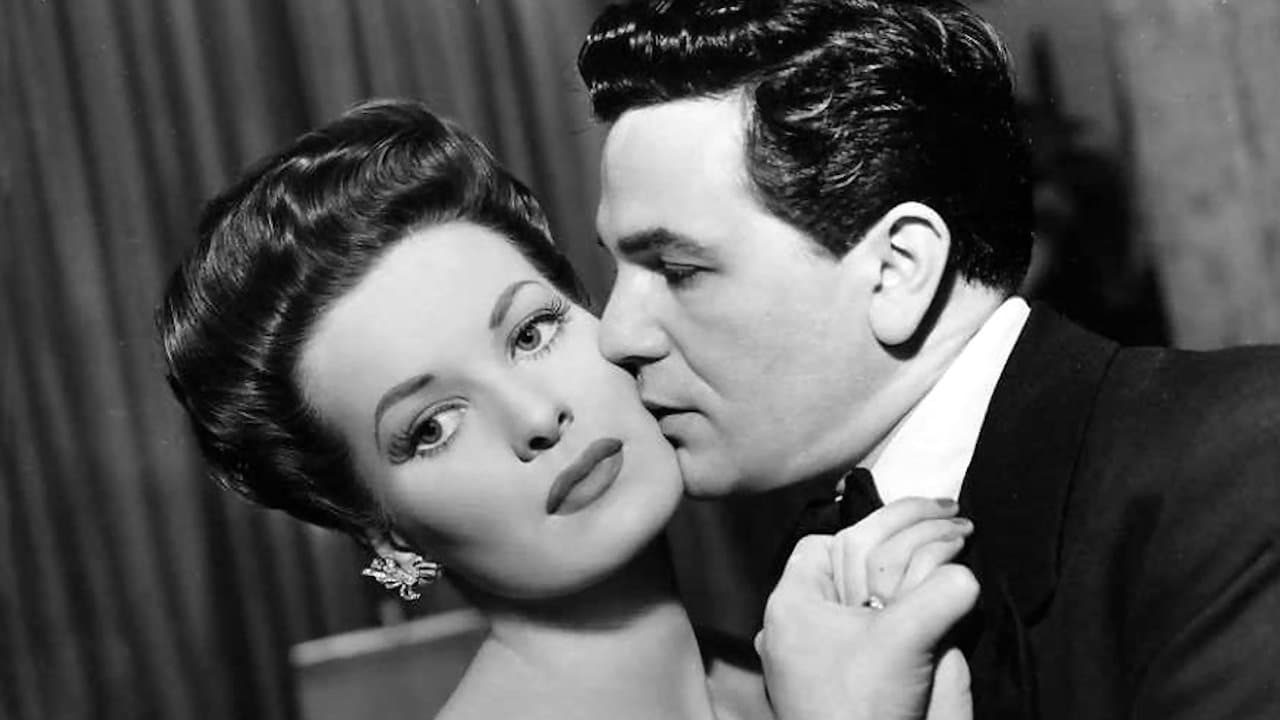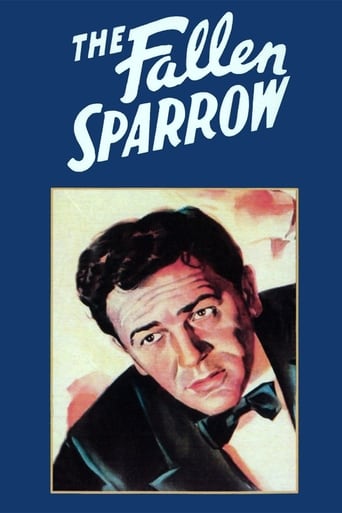

The very thought of Maureen O'Hara with the Nazis is most ridiculous. At least, they should have had her with a strong Irish accent, as we know that many in Ireland was sympathetic to the Germans during World War 11 because of their hatred towards England.We never fully understand why the Nazis wanted McKittrick, the James Garfield character. Therefore, it becomes puzzling that he was supposedly allowed to escape.It doesn't take much to realize who the man with the limp is.We're dealing with a Nazi spy ring in the higher classes of New York, but no, this is certainly no "House on 92nd Street."In this film, everyone is suspect. It may even take us a while to realize what the range, where the Garfield character, was sent to after his escape really is.
... View MoreLushly mounted espionage thriller that rivets the eye even when the narrative meanders. It's the great RKO artistic team of Musuraca, Silvera, and D'Agostino setting the stage for noir's post-war golden period, foreshadowed here by the rich b&w landscape. Garfield's a shattered veteran of the Spanish Civil War, tortured by the fascists and a mysterious limping man. Now he's back in New York trying to regain stability and find out who killed his best friend. Along the way, he meets up with sinister European types and the beauteous O'Hara looking like she stepped off a 1942 Vogue cover. Turns out everybody, including the limping man, is trying to get possession of a regimental battle standard whose whereabouts only Garfield knows. Needless to say, at times the storyline could use a road map to follow. But that's okay because the appeal lies elsewhere, as in the shadowy characters and photography.Note how effectively Garfield's moments of derangement are highlighted by the musical score and the astute close-ups. Those penetrating few moments are hauntingly expressed as they reach into Kit's (Garfield) tortured "subjective" reality. The actor delivers in spades in a difficult role requiring that he be in about every scene. The movie's also an eye-full for the guys with three knockout leading ladies. However, despite her looks, I think the normally vivacious O'Hara is miscast, a little too stiff and impassive for the subtleties required by her character. On a different note, the limping man's dragging foot adds a creepy sound to the sinister atmosphere and is what I remember most from seeing the film as a kid. Anyway, the movie's an unusual thriller with a really great "look" that stands up well over the decades.
... View MoreNovelist Dorothy B. Hughes built a good head of paranoia and suspense in her 1942 thriller THE FALLEN SPARROW (TFS), and RKO masterfully and faithfully adapted the 1943 movie version. Director Richard Wallace, screenwriter Warren Duff, and editor Robert Wise condense the novel's events and complex relationships without watering it down.Starting with the quote "...in a world at war many sparrows must fall...", the film brings us into the mindset of troubled yet determined hero John "Kit" McKittrick (John Garfield). Kit's boyhood friend Lt. Louie Lepetino had helped him escape the Spanish prison where he'd been tortured for two agonizing years after the Spanish Civil War. Returning to New York City from a ranch rest cure, Kit's stunned to discover that Louie's been killed in a 12-story fall from a window at a swanky party for wartime refugees Dr. Skaas (Walter Slezak) and his nephew Otto (Hugh Beaumont, pre-LEAVE IT TO BEAVER). Hell-bent on proving Louie's death was neither accidental nor a suicide, Kit starts sleuthing, with help from pal Ab Parker (Bruce Edwards). Kit's grim goal: killing Louie's killer.Kit's suspects include just about everyone in his upscale circle of friends, especially the women, since he's sure only a dame could've gotten close enough to Louie to shove him out a window. Was it Kit's alluring old flame Barby Taviton (brunette Patricia Morison may not look like the blonde Barby described in Hughes's book, but she's got the sophistication and entitled attitude)? Lovely, sad-eyed refugee Toni Donne (Maureen O'Hara in a change-of-pace role; more on that shortly)? Ab's young songbird cousin Whitney Parker, affectionately known as "Imp" (appealing Martha O'Driscoll. By the way, this character's name was "Content Hamilton" in the novel, but I like her new name better)? Kit's biggest obstacle: he has what we now call Post-Traumatic Stress Disorder. He's still haunted by the memory of the mysterious man from Franco's elite Nazi squad, a limping man who tortured Kit in his dark cell, trying to make him reveal where he'd hidden his regiment's battle standard. (In the novel, the McGuffin was a set of fabulous Babylon goblets the defiant Kit took from the enemy. The goblets are in the film, but the script emphasizes that battle flag and the symbolism behind it.) Even now, Kit struggles against fear as he imagines hearing the drag and thump that signaled his sadistic tormentor's arrival -- or IS he imagining it? Terror mounts as Kit realizes his enemies may have followed him home, maybe even planting their spies into every aspect of Kit's life, placing not only himself in danger, but also his friends and loved ones...The role of Kit, a working-class, self-described "mug" in gent's clothing (his ex-cop dad struck it rich) with a heart full of all-but-shattered ideals, fits John Garfield like a glove. Garfield's toughness, tenderness, and humor have us rooting for Kit. As in the book, Kit spends lots of time and energy trying to convince himself he's not afraid, only to be proved wrong, to his frustration. Hughes's haunting descriptions of Kit's memories of his horrific Spain ordeal are conveyed well in Garfield's powerful monologue, enhanced by the camera's slow close-up on his expressive face. The sweat on Garfield's brow and the twitch in his cheek as he finally faces his enemy during the climax speak volumes.As Toni Donne, the guarded beauty with a terrible hold over her, lovely Maureen O'Hara (did they darken her red hair, or is it just Nicholas Musuraca's gorgeous black-and-white photography?) tries to downplay her Irish accent, but it still lurks in certain words. While our household loves O'Hara, she wouldn't have been our first choice as a femme fatale, but Toni's inner fear and regret come through in O'Hara's poignant, soulful portrayal, winning my sympathy. O'Hara has great fire-and-ice chemistry with the intense Garfield. In the book, Kit kissed Toni, but with her cautious reserve, she never kissed back with any kind of enthusiasm. In this film version, Kit and Toni finally share longing kisses and tender embraces -- much more fun to watch! :-) Walter Slezak's performance as Dr. Skaas is silkily sinister, though his true evil nature is telegraphed earlier than in the book, with his interest in "the cruelties of men towards other men" and "comparing modern scientific torture with the methods of the ancients" (who apparently didn't mess with victims' heads enough for Skaas). An avuncular hybrid of Sydney Greenstreet, Peter Lorre, and Clifton Webb, Slezak is one of 1940s cinema's most memorable villains.TFS keeps the paranoia percolating and the suspense simmering, even keeping much of the novel's best dialogue, with only minor tweaks. The filmmakers truly evoke the feeling and atmosphere of wintertime World War 2 Manhattan, especially with their use of shadows, light and sound as well as Roy Webb and Constantine Bakaleinikoff's Oscar-nominated score. Today's audiences might not understand Kit's obsession with the battle flag, even with the explanatory scene at Toni's home -- but then again, I bet the men and women fighting overseas will get the significance of a battle standard and what it symbolizes.Although Dorothy B. Hughes's mysteries were best-sellers in her heyday, they seemed to be all but forgotten after she retired to focus on her family. Luckily, the film version of TFS captures her tale of terror beautifully. If you want to read the book, Amazon.com has both new and used paperback editions available so you can rediscover her. Interestingly, the 1988 paperback edition I read had cover art with an uncanny resemblance to, of all things, the movie poster for THE FRENCH CONNECTION!
... View MoreWhile this is not the greatest Garfield movie, it contains one of his most gritty and complex performances. While his tough, streetwise characters usually have a tender, caring heart that is in the right place, in this film he portrays a vulnerable, nearly-broken man who really has to work hard to summon the strength to fight and survive. The depiction of what would have been known then as "battle fatigue" or "war neuroses" is superb, and very true to what we now recognize under the rubric of Post-Traumatic Stress Disorder (PTSD). It is worthy of study both as a film and as a kind of clinical document or case study of this condition. The use of expressionistic camera, lighting, and sound techniques to intensify the viewer's grasp of his interior mental/emotional status is quite effective, and I think this is what prompts some to classify it as a proto-Film Noir; this, along with some voice-over narration and duplicitous femme fatale characters might also lend such elements of noir identity. However, I am not too sold on that, any more than I would be to call Citizen Kane a film noir because it uses strong lighting & camera effects or a complex flashback narrative pattern. I think it is a good solid war drama full of some ambitious ideas and novel effects for that time period. As most reviewers note, the plot is convoluted and difficult to piece together, and the loyalty of many characters is dubious, kind of like The Big Sleep or The Maltese Falcon (now THERE'S a couple of films noir!), and probably contributes to the lesser-known status of this film. I think the focus on the "battle standard" is maybe not something that evokes a visceral reaction in most people either, so it is hard to wonder why everyone is struggling so hard to obtain it. We can all get why the characters want to possess a jewel-encrusted statuette of the black bird--or even some secret microfilm--but the Borgia flag is a little more abstract. All in all, I think the film is strongest in the acting department, and none stronger than John Garfield. I think it should be re-released as soon as possible on DVD in a nice print and with some extra features--it is more deserving than a lot of other things that roll off the assembly line!!
... View More